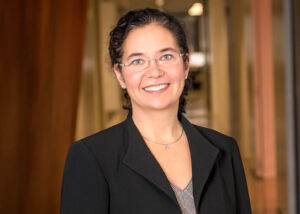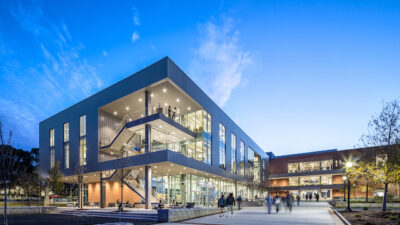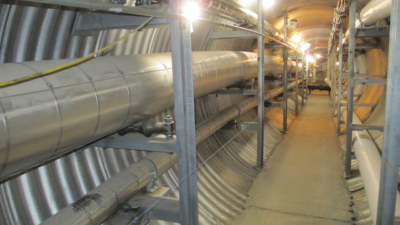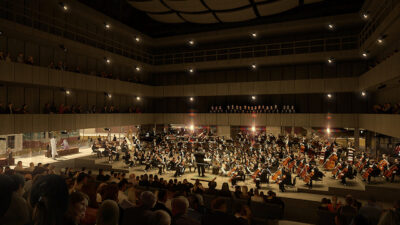Dr. Arthur Pancioli, MD, chair of the department of emergency medicine at the University of Cincinnati’s College of Medicine, talks about how medical education has shifted, what impact COVID-19 will have on emergency departments for the future and more.
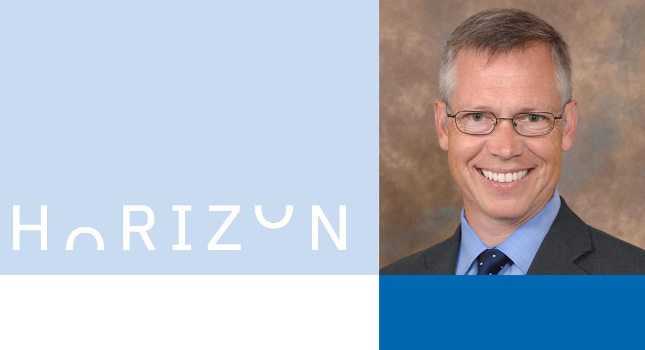
Emergency department physicians are no strangers to life or death situations. They serve on our front line ready to fight the most serious medical conditions, such as heart attacks, strokes and infectious disease. The coronavirus pandemic has tested emergency department in new ways. They’ve had to rapidly develop new plans for capacity surge, personal protective equipment (PPE) preservation, and patient experience, all to fight the spread of COVID-19.
As chair of the department of emergency medicine at the University of Cincinnati’s College of Medicine, Dr. Arthur Pancioli, MD, is one of the nation’s leading voices on emergency room services and operations. He has devoted his life to saving lives and educating others to do the same. His work and personal lives have changed dramatically over the past two months. He kindly spoke with us about how medical education has shifted, what impact COVID-19 will have on emergency departments for the future and more.
Question: I’ve heard mixed opinions from people on the front lines, whether they feel like heroes is the right categorization. How do you personally feel when someone calls you a hero right now?
Pancioli: We are necessarily facing some risk. There have been many of my teammates who have expressed real stress. I’ve had clinicians who have truly contemplated quitting this job because of the level of stress. Invariably it’s not for fear of their personal health, it’s of delivering that disease to their family. So, the stressors are real. The threat is real.
Our [COVID patient] numbers are not as high. When I go to work in the emergency department, there is a bit of imposter syndrome, sensation, because we’re not working as hard as our friends and colleagues in New York or some other places. They’re doing extraordinary things and when an emergency physician or intensivist or a hospitalist dies you go, wow, that takes it deep and hard and makes it pretty real.
So, I do have at times a sense of imposter syndrome because I go to work and I am not as physically challenged by the number of cases as usual, but the stressors are very, very real. The recognition that we are facing those stressors and the support from the community has been lovely. For me personally, it validates the entirety of my team.
Question: How have the last few months changed what you’re telling medical students and how you’re explaining changes in care, how to be present when family members can’t? How do you teach that on the fly?
Pancioli: First of all, we don’t because I haven’t seen a medical student in a month. All of the medical students have been removed from the clinical arena. Until we get a better handle on the actual risk, we don’t have enough PPE to put them in it, so we can’t have them in the arena. We still have the residents, and I work with them every time I’m on shift. They’re the ones that are getting the majority of my attention.
For the residents who are my charge, they’re being impacted in many ways. Number one, our overall volume of emergency department patients is about half. Quite frankly as a clinician you gain your diagnostic acumen through repetition. I’m the old guy, I’ve seen over 150,000 emergency department patients over my career and the residents get annoyed at me when I point things out that they didn’t see. Well, the eye cannot see what the mind does not know and they just haven’t seen enough.
Diagnostics, is all about pattern recognition. Having evaluated ill and injured patients for over 30 years, I can’t walk down a city street without making diagnoses. If I sit in the lobby of an airport, I make diagnoses. You just simply study the human figure in terms of what is their physiology doing, what does it look like? So, our residents, the number of patients they’re seeing and learning from is down thus diminishing their ability to enhance their pattern recognition.
Question: Do you think are the traits among your team that prepared people differently or gave them a higher level of resiliency right now?
Pancioli: The emergency department is usually the red-headed stepchild that everyone says is so annoying because we can’t make money and are dealing with the difficult cases and calling people away from their other departments. Now all of a sudden everyone’s saying, huh, that department has really stepped up and we understand their role better.
If you think about it, I don’t know if we’re genetically predisposed or if it’s been beaten into us, but every single day you come to work as an emergency medicine physician, you never know. You never know what you’re going to do. As a result, we aren’t those who require static or routine or the usual because there is no usual in our world. We chose that.
As an emergency medicine physician, every day you come to work you have in the back of your mind, my greatest fear is X. It’s the unresuscitatable child. It’s the one ‘we almost saved ultimately couldn’t.’ We need to know a myriad number of things from trauma to cardiovascular disease to neurovascular disease to pharmacology, overdoses and atypical pregnancy. So, we are by nature a group that never knows what our day is going to be and we chose that reality.
Question: When you think about the impact this will have, do you think this will have a lasting legacy that will change emergency medicine?
Pancioli: Undeniably. First of all, there’s going to be a lot of research into what happened to our native emergency department users. We know who showed up because of COVID, but I’d like to know who didn’t show up. Where did the other half of my native business go?
One group is the ‘worried well,’ they are people who have some concern because they had a pain or an ache or a something, something didn’t seem right, and they wanted clarification or reassurance. Now, that group is not coming because they’re afraid to come to the hospital. But it kind of tells you that many didn’t have a true emergency. We also know, unfortunately that there are some patients who have true life-threatening symptoms who are not coming out of the same fear and that is really unfortunate. Finally, since we’re not doing any elective procedures, you have to ask yourself: does that mean there are no complications of elective procedures to bring in business? Probably. If our native business has changed, will it ever come back to the same place? I will never be as tolerant of boarding (keeping an admitted patient in the ED) again because now you can’t tell me there isn’t something that can’t be done. Boarding ended the same day we stopped doing elective procedures. Now, we must return to doing those procedures but it is clear that there are better ways to manage the flow and admission patterns to prevent the backup in the EDs.
I don’t want to ever see this again where hospitals are losing money hand over fist and elective procedures that people so desperately want can’t be done. But I will have insistence that there can be better management of patient influx and throughput.
Question: If we think about educational mission and what you want from the ED of the future, from a learner’s perspective, what do you think you’re going to need?
Pancioli: For so long, we had an ED that was small, difficult to clean, boarded up to capacity and had a reputation of only serving the ‘gun and knife club.’ People didn’t want to come. Yet we have the best staff in the world. So, if we match facilities to our clinicians, we’ll have patients come.
What does that mean? Our residents, our learners, will have the ability to see more patients with more disease processes. In reality, you don’t want anyone to be sick or injured, but if they are, you want them to come to you because you want to take care of them. So, by creating the venue to match the capability, that will allow our residents more opportunity than ever before and be able to provide the patients the best care in the best facility.
With simulation spaces, we would like to take one of these fantastically designed, very large resuscitation bays and do two things. One, we do real time simulation. We already do that, but if we build in more of the technology it will be smoother. We’d also like to do camera-based learning. Right now, if someone’s got to do a resuscitation and you’re a third-year medical student, you’re in the fourth row. It’s hard to see, hard to hear and people are trying to kick you out. If instead, just a few doors down, we have a screen showing what’s going on in the resuscitation from multiple angles, and we dedicate one of the non-resuscitators to go over there and point out what’s being done in real time to the junior learners, that would be unparalleled.
This article originally appeared on CannonDesign’s website. CannonDesign is a CFE Media content partner.
